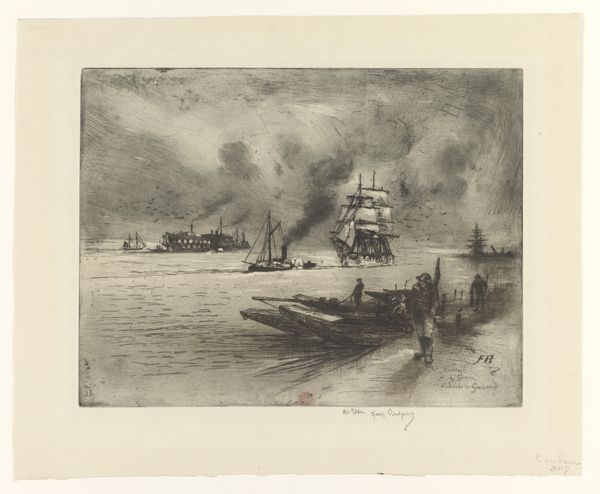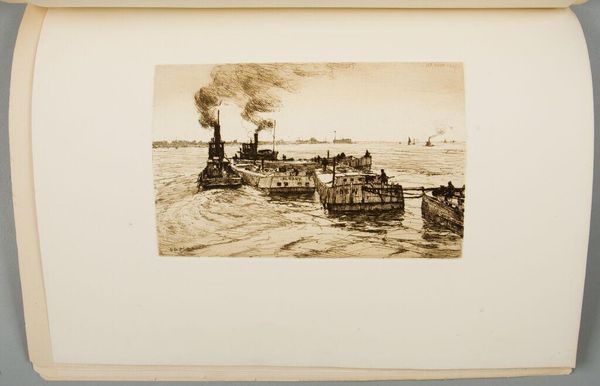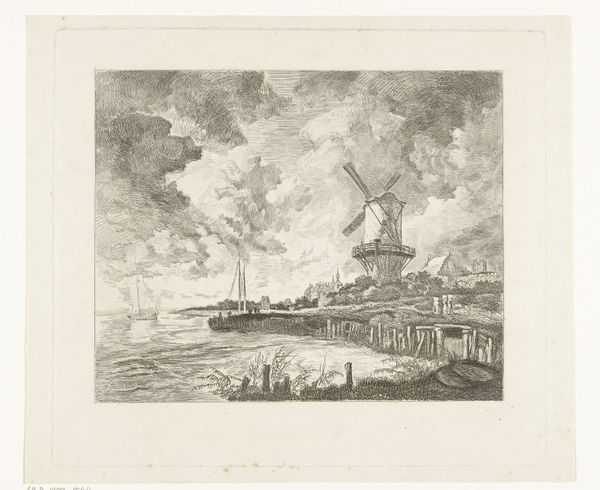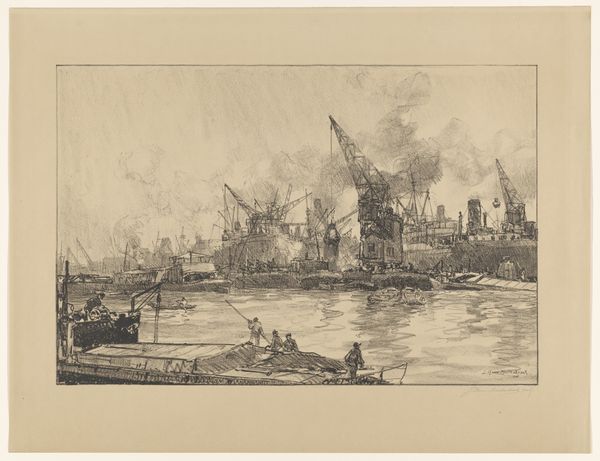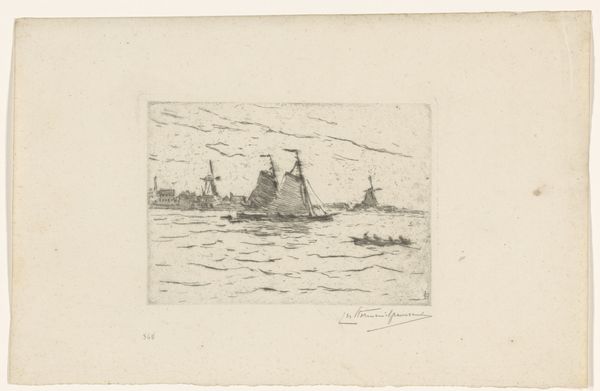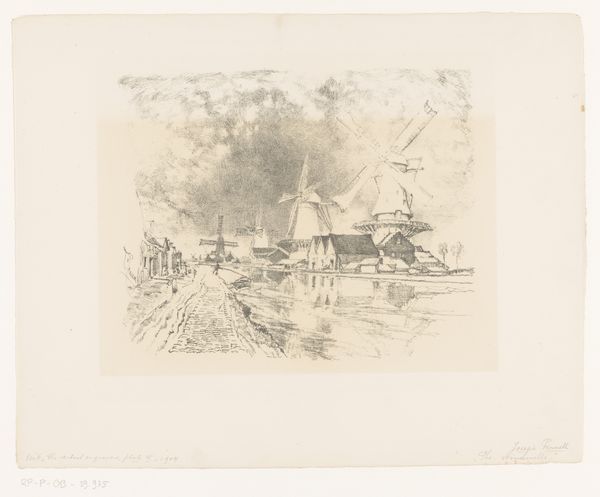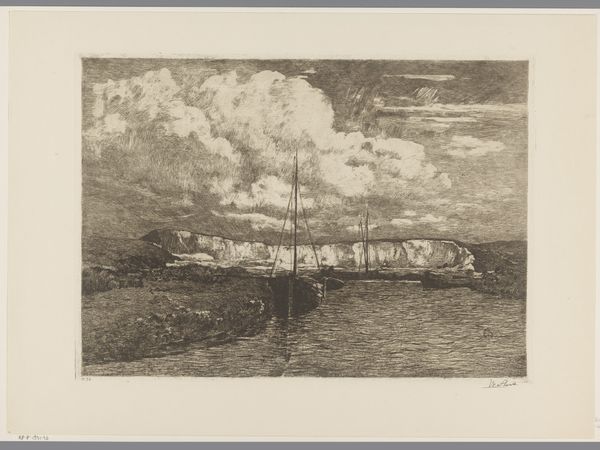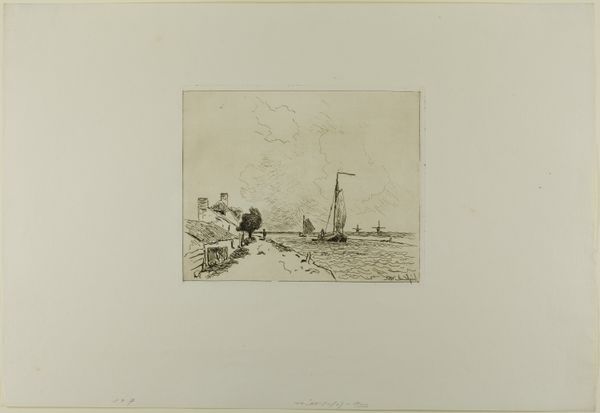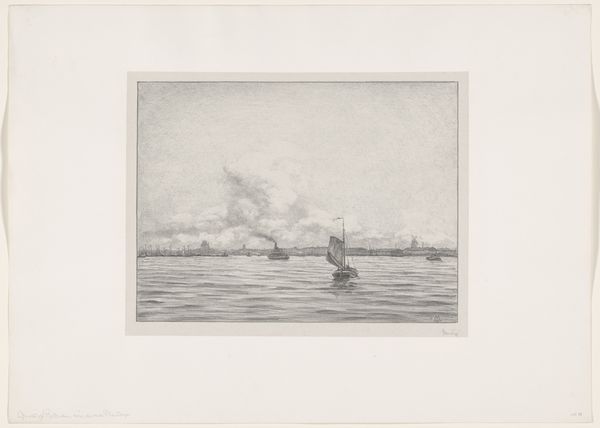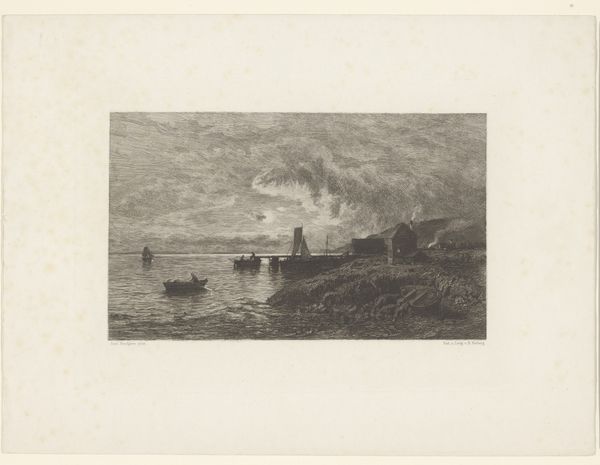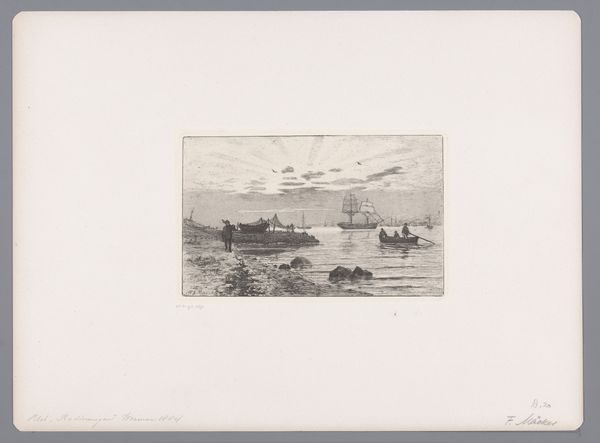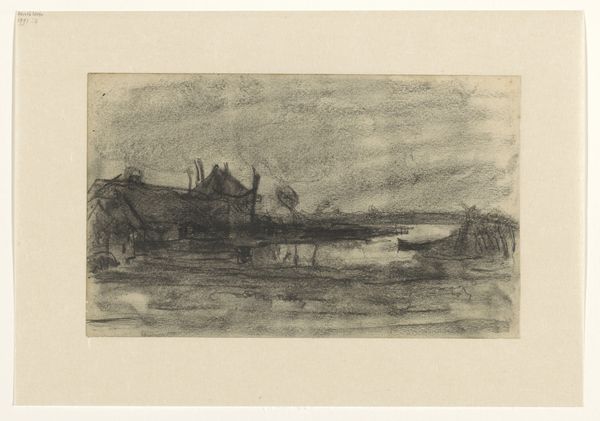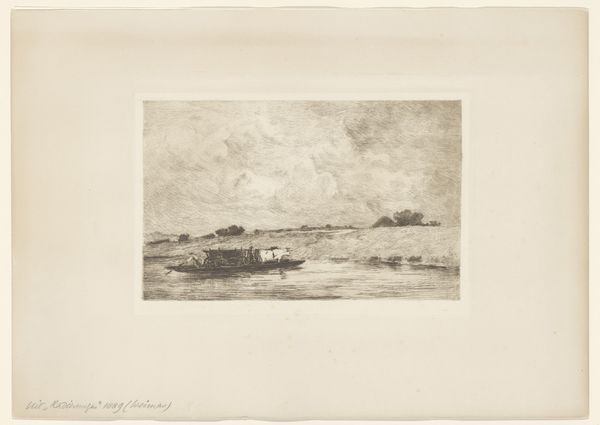
print, etching
# print
#
etching
#
landscape
#
cityscape
Dimensions: 4 3/8 x 6 7/8 in. (11.11 x 17.46 cm) (plate)8 3/4 x 11 3/4 in. (22.23 x 29.85 cm) (sheet)
Copyright: Public Domain
Editor: So, here we have "Canal Boats and Tugs," an etching by Charles Adams Platt from around the 19th century. The details are amazing, it is such a precise print. It seems like a very industrialized scene, almost like a photograph capturing a moment. What is your read on this etching? Curator: The image speaks to the immense transformations spurred by industrial capitalism. Focus on the steam billowing from the tugs—that smoke symbolizes progress and energy, but also a profound alteration of the natural world, and an increased dependance on fossil fuels. Editor: Definitely! All those vessels seem so packed together! Curator: Exactly. Platt presents a tightly-knit network. The etching medium, with its reproducible nature, mirrors the efficiency and mass production of the era. Look at the marks that are suggestive of human labour. Editor: So, the medium of etching itself reflects industrial processes. Curator: Precisely. Consider too, the implied consumer demands driving this canal traffic, as this piece provides insight into the material flows and supply chains of the period. What do you think of the role that these working class jobs in these industrial sectors plays in the grand scheme of things? Editor: That's fascinating! I never really thought about it like that, thinking about materials, production and labor instead of purely focusing on subject matter. Curator: Right? Looking at the materiality can show so much about production, labor and the economic forces that are at play. Editor: Well, thank you for opening my eyes to all of that! Curator: Absolutely! These pieces can speak volumes when we look at how they were made.
Comments
No comments
Be the first to comment and join the conversation on the ultimate creative platform.
